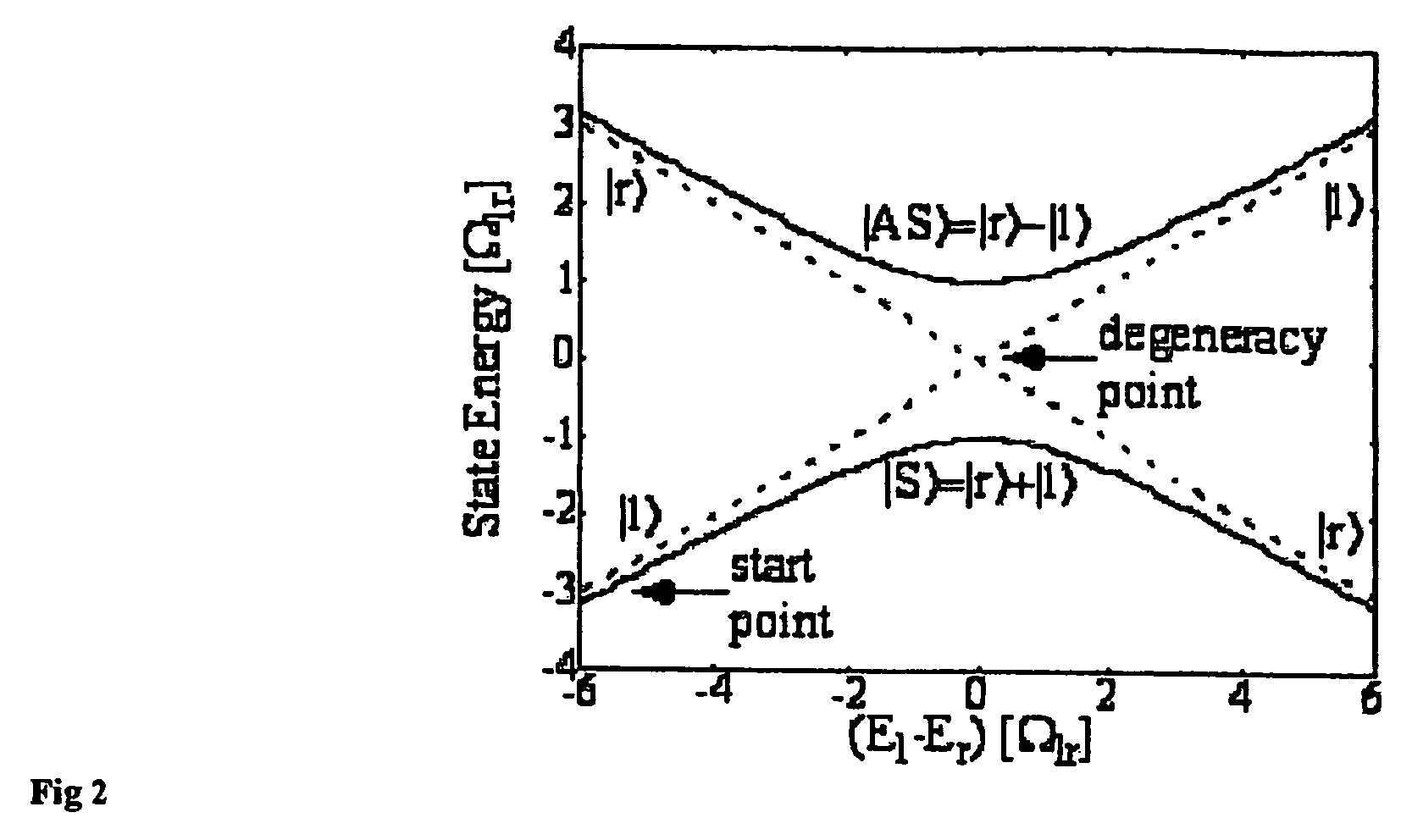Qubit readout via controlled coherent tunnelling to probe state
a tunnelling and readout technology, applied in the field of quantum computers, can solve the problems of population decay in position space qubits on timescales, limited experimental experience in coherent solid state systems without optical interactions, and relatively high decoherence associated with charge distributions, etc., to achieve the effect of improving the readout mechanism
- Summary
- Abstract
- Description
- Claims
- Application Information
AI Technical Summary
Benefits of technology
Problems solved by technology
Method used
Image
Examples
Embodiment Construction
[0057]Referring first to FIG. 1(a), a three-donor system comprises three ionized phosphorus donors 10, 11 and 12 sharing a single electron (not shown). The strongly coupled qubit is defined by the donors 10 and 11 labelled |l> and |r>. The weakly coupled probe 12 labelled |> provides the readout. We follow the gate notation used in Refs. [24].
[0058]The energies of each single-electron state are controlled using shift gates 15, 16 and 17, labelled Sl, Sr, Sp, and the energies of these states are El, Er, Ep.
[0059]The coherent tunnelling rates, Ωlr and Ωrp are controlled by barrier gates 20 and 21 labelled Blr and Brp respectively, which control the barrier height (and hence the coherent tunnelling rates). There is assumed to be no tunnelling between 10 and 12. The B dependence is highlighted as a dynamically tunable variable, but the static properties dependent on fabrication processes have been dropped. This follows the spirit of Gurvitz's [19] treatment for the two coupled-dot syste...
PUM
 Login to View More
Login to View More Abstract
Description
Claims
Application Information
 Login to View More
Login to View More - R&D
- Intellectual Property
- Life Sciences
- Materials
- Tech Scout
- Unparalleled Data Quality
- Higher Quality Content
- 60% Fewer Hallucinations
Browse by: Latest US Patents, China's latest patents, Technical Efficacy Thesaurus, Application Domain, Technology Topic, Popular Technical Reports.
© 2025 PatSnap. All rights reserved.Legal|Privacy policy|Modern Slavery Act Transparency Statement|Sitemap|About US| Contact US: help@patsnap.com



